9 Common Causes of Chimney Leaks
We recently provided chimney repair services on a on Silver Spring, MD home with a chimney leak. This time of year, we encounter more chimney leaks than during the drier season. It’s common to have your chimney develop some leaks. The scariest part of it is that you can have a chimney leak without realizing it. Unknown leaks can lead to potential hazards and costly repairs if left untreated, so it’s essential to have a regular chimney sweep and inspection done by a certified chimney repair company. Some types of chimney leaks are not as dangerous, but they still cause damage to your home because moisture gets where it should not be. Here is a short list of the most common causes of chimney leaks:
No cap or cover on the chimney

A chimney that is open to the sky lets rain and snowfall inside and cause that wet campfire smell to permeate the room. It also gives animals and birds opportunities to build nests. Things pile up, and your chimney could be blocked, leaking carbon monoxide into the ho
Damaged chimney crown
That sloped layer of concrete, the chimney crown, is what keeps water from damaging the mortar in the bricks beneath it. It also seals the gap between the liner and the outside chimney. When it has little cracks, the freeze-thaw effect makes those cracks grow bigger. It’s like losing shingles on the roof. If your crown is damaged, there will be leaks. We witnessed this problem with a chimney repair project in Ellicott City, MD Be sure to read this article on repairing chimney crown cement.
Deteriorated or improperly build chimney shoulder
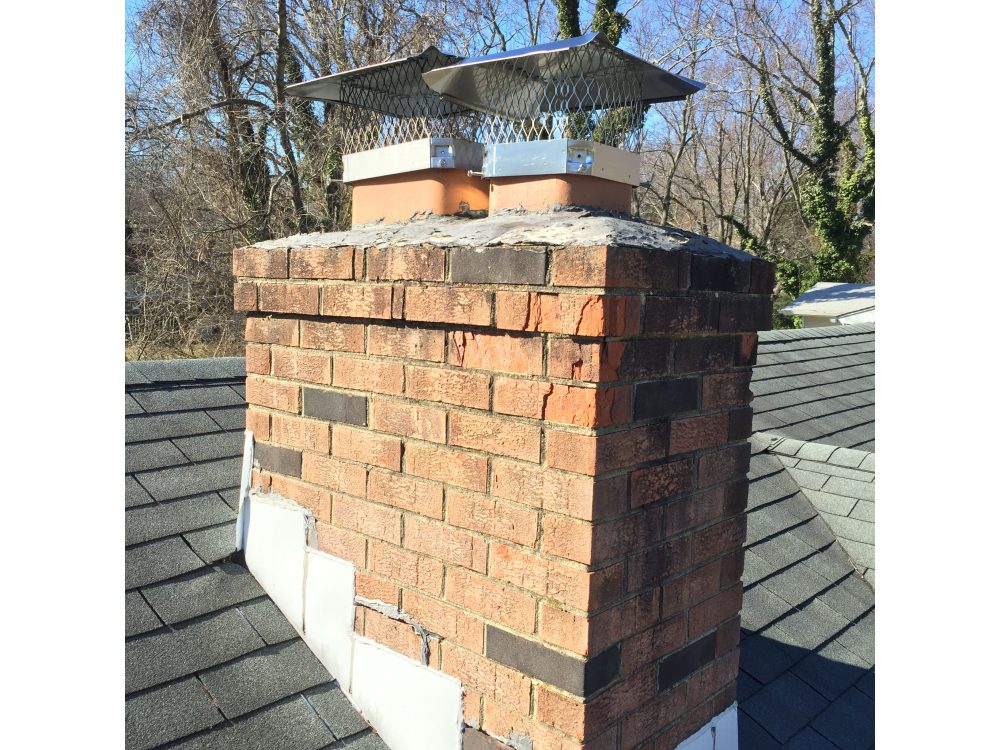
The shoulder of the stack, the sloped area on the stack where it transitions from a broad base to narrow, is a common area where the masonry deteriorates and is the cause of leaks, or it is just not constructed well enough to hold off rain and snow. Here is an example of a chimney in Columbia, MD that was poorly constructed, resulting in leaks. Often it is built without a proper pitch to allow the water to run off, and as a result, it soaks and leaks its way into the chimney.
Deteriorating mortar & masonry
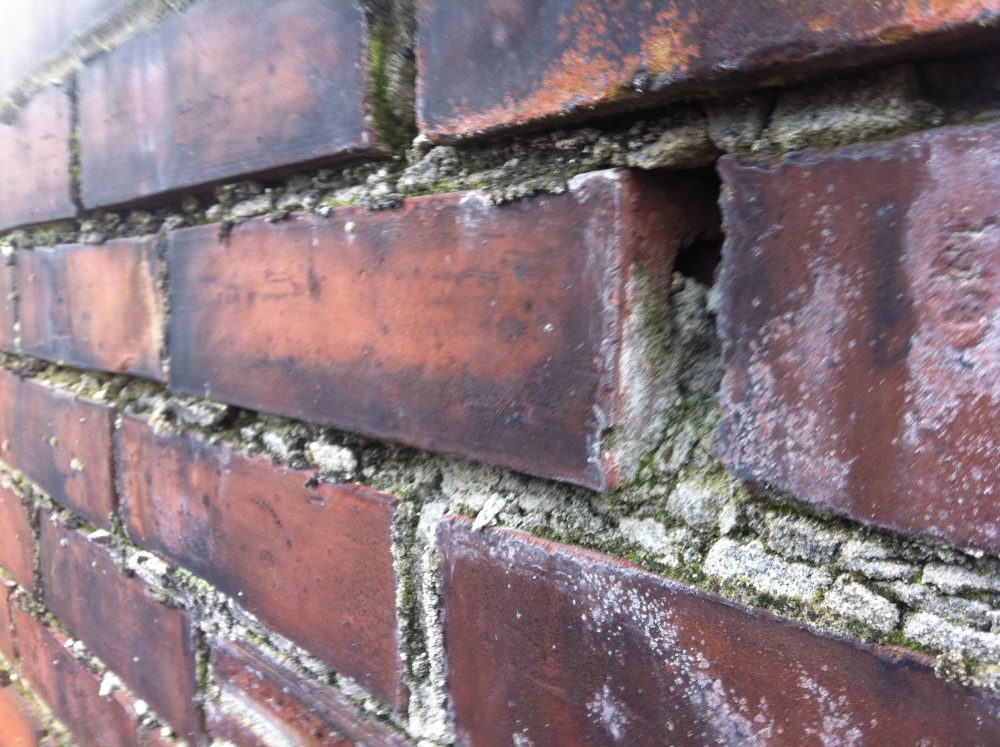
The Chimney Safety Institute of America says water and your masonry chimney is a dangerous mix. The result of prolonged water contact rusts metals in the stack structure, and the porous masonry holds water that allows mold in warm situations and the freeze-thaw effect when it’s cold breaks down the integrity of your building. We frequently see this problem when doing chimney repairs in Washington, DC.
Inadequate flashing installation

The flashing is supposed to be the flexible connection between your chimney and roof that lets each side expand or contract without making a gap between them. If the flashing needs to be repaired or replaced, you will see leaks around the chimney. This is a common problem in Washington DC.
Rusted chase cover
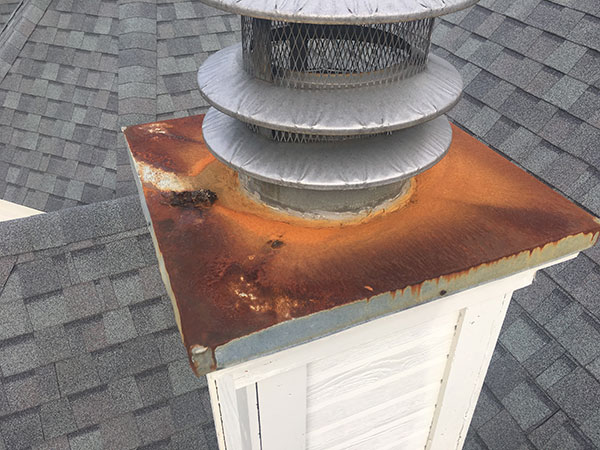
Often when the builders install prefabricated fireplaces, they will install a galvanized chase cover that sits flat on top of the chase. When snow sits on top of it, it weighs it down and allows water to puddle up, causing the galvanize chase cover to rust out and allow water to leak into the house. A certified chimney repair company can install a new stainless steel chase cover that won’t rust and is pitched to allow the water to run off.
The wrong chimney liner
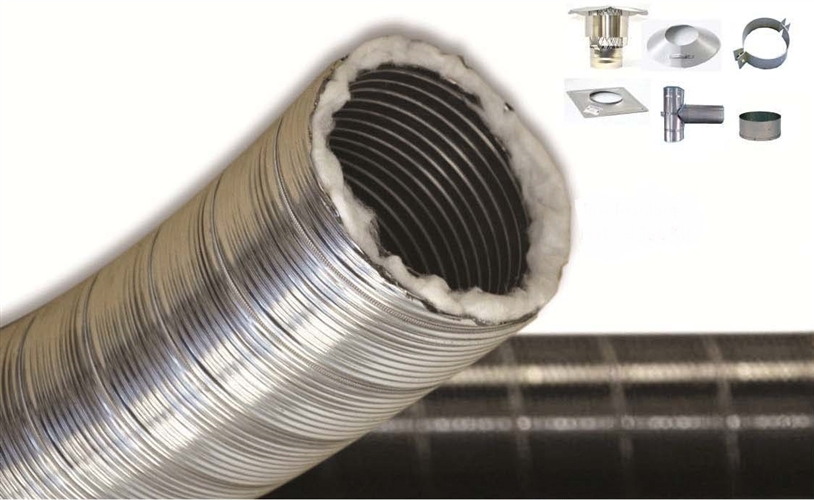
Your chimney liner must be sized based on the appliance it’s serving, if the flue is too big for the device(s), the flue gasses will condensate. For wood-burning appliances, this means excessive creosote build up which can lead to chimney fires and for gas appliances this means moisture build up in the flue system which can cause the masonry to deteriorate and cause the moisture to leak out into the house. A certified chimney repair company can reline your chimney with the right size liner.
You need a chimney cricket

“Cricket” is the term for a water deflector that is installed where the roof rises from the chimney. It is an excellent idea for a steep roof or chimneys more than 30 inches wide. As the rain runs down the roof toward the chimney, the cricket moves the water to the sides and on down to the gutter.
There’s a clog in your chimney
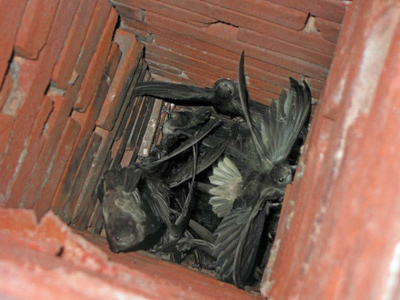
Leaky chimneys can cause moisture damage to the point that bricks fall into the chimney and clog it up (commonly seen in older homes that are not lined) or an animal builds a nest in the chimney clogging it up. Whatever the case, if the chimney is clogged, there is a problem with the airflow. Airflow problems can result in no heat and hot water or a more severe type of leak — carbon monoxide.
So how do you keep these causes of chimney leakage from causing trouble? By making sure, you have a regular chimney inspection by a reputable chimney repair company. That way, the source of the leak is identified by the people who know what the problem is and can fix it. No matter what kind of leak you have in your chimney, letting it continue guarantees your problem will get worse.

